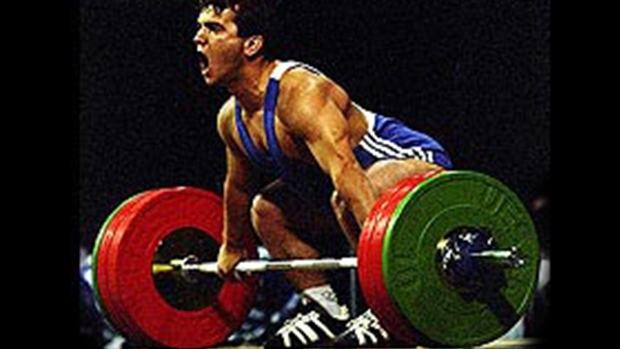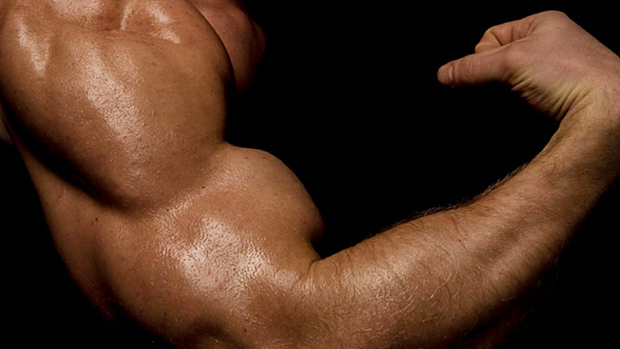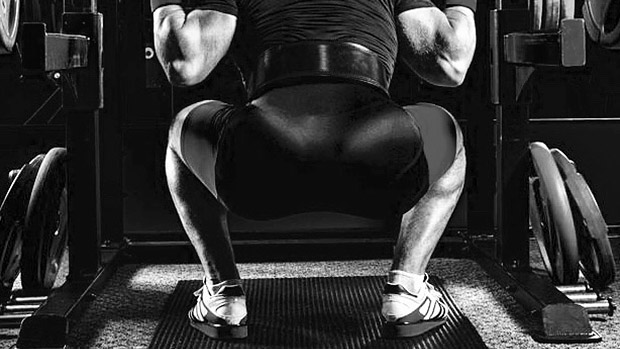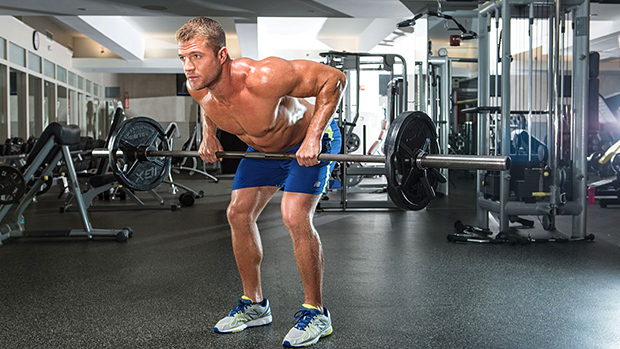Oh, the snatch. Take a moment to embrace your juvenile side and
let your laughter out.
Done? Great, let's learn something.
Besides being a classic double entendre of the weightlifting
world, the snatch is an explosive lift that will tax your entire
body.
After sorting through the confusion regarding the Olympic lifts,
two questions stood out:
1) How do I perform the Olympic lifts?
2) How do I implement them into a training program?
In this article I'll deal with learning how to do the Olympic
lifts, with an emphasis on the hang power snatch. In future
articles, I'll discuss how to do other variations of the Olympic
lifts and how to work them into your training.
The Exercise Checklist
In order to perform the Olympic lifts correctly and efficiently,
you must be able to perform six exercises with proper technique.
These exercises are the foundation to learning the snatch and
clean:
1. Standing press (ending with straight arms)
<!--
-->
2. Good morning (bending at least 45 degrees at the hip
with a slight arch in the back and a slight bend at the
knees)
<!--
-->
3. Front squat (hands on the bar instead of cradling the bar in
the crooks of your elbows)
<!--
-->
4. Overhead squat (at least to parallel)
<!--
-->
5. Romanian deadlift (RDL)
<!--
-->
6. Push press
<!--
-->
Performing these exercises correctly will ensure that your body
is ready to handle the stress of the Olympic lifts. These
preparatory exercises are accomplishing three
things:
1. Developing the range of motion you'll need in order to
prevent injury.
2. Proper strength and stability development of the torso and
posterior chain.
3. Familiarizing yourself with the positions you'll need to get
in during the execution of the Olympic lifts.
These exercises must be performed correctly before you can move
on to the fun stuff. Think of the old sayings, "You have to learn
to walk before you can run," or "A house is only as strong as its
foundation." I'm sure these sayings were penned by an old
weightlifting coach.
 |
Don't build on a weak foundation.
Having coached hundreds of athletes, I've yet to come across one
who couldn't eventually perform the lifts with acceptable
technique. Some athletes get it in a week, while others take
months. However, they all started with the six basic exercises.
Once they were mastered, it took just a few more meetings to teach
them the snatch and clean.
The Progression
I teach the Olympic lifts from the hang-above-the-knee position.
The pull from the floor is a bit more difficult to grasp, therefore
athletes in sports other than weightlifting should note that the
extra effort to learn the pull from the floor doesn't equal
the reward. I must stress that "pulling strength" from the floor is
important, but it also can be achieved with the clean or
snatch-grip deadlift.
 |
The snatch-grip deadlift.
In this progression, one exercise is done at a time until the
skill is acquired. Then you move on to the next, with each exercise
building on the previous one.
The Starting Position
• Use the RDL as a reference.
• Place your hands on the bar using your overhead squat
grip.
• Place your feet slightly closer than you would if you
were performing an Olympic squat.
• Rotate your elbows to the side and slightly curl your wrists
under.
• Lower the bar to the middle of your thighs. This bar position
will vary depending on the length of your arms and torso. Don't go
below your knees.
• Shift your weight to the middle of your feet as you would if
you were performing a vertical jump. Make sure your feet are flat
on the ground.
• Keep your shoulders in front of the bar.
<!--
-->
Jump Pull
• Use the push press as a reference.
• Once you're in the starting position, jump straight up.
Initiate the jump with leg and hip extension.
• Make sure your arms remain straight throughout the
drill.
• Keep the bar close to your body at all times.
• Make sure your legs and hips are fully extended at the finish
and allow your shoulders to shrug.
• You should be in a straight line at the
finish.
• If done correctly, you should feel the energy of the bar
travel up through your arms.
<!--
-->
Olympic Row
• The purpose of this drill is to teach proper elbow movement
and bar path.
• Use an empty bar or stick.
• Rotate your elbows out while keeping your chest
up.
• Raise your elbows up and to the side, keeping them higher
than your wrists and the bar close to the body. It doesn't
matter how high the bar goes; this isn't a traditional upright
row.
• This drill is to get people to understand the arm and elbow
path during the execution of the Olympic lifts. Please note that
while performing the Olympic lifts, you're not pulling the bar up
with your arms; you're pulling your body under the
bar.
<!--
-->
High Pull
• This is a combination of the jump pull and upright
row.
• This drill gets people accustomed to moving the bar
vertically by using leg and hip extension (as in a push
press).
• After the powerful leg and hip extension, allow the bar to
rise.
• Use your arms to guide the bar up along your body. Don't
initiate bar movement with arm pull.
• Keep the bar along the line of your body (as you did with the
Olympic row).
• Your body should be in a straight line at the
finish.
<!--
-->
Foot Work/Receiving Drill
• This teaches you how to quickly change direction and how to
lower your center of gravity efficiently.
• You'll also learn proper foot and hip action. Concentrate on
getting your hips down and back as quickly as
possible.
• Your feet should pop out slightly. Never go past the
width of your shoulders.
• Your feet should end up in the same position in which you
perform the front squat.
• The hip action corresponds with the action of pulling
yourself under the bar.
<!--
-->
The Finish: Hang Power Snatch
• Once you've extended, you must now immediately reverse your
direction by using the footwork drill. In order to keep the bar
along the line of the body as the bar rises and you go under, you
must rotate your elbows around the bar. You don't want to be
rotating the bar around the body (as in a reverse curl). This is
the reason a bar designed for weightlifting will rotate
smoothly.
• Catch
• Receive the bar at arms length with your palms facing the
ceiling. Don't press the bar upward. Remember that you're pushing
yourself under the bar.
• Your shoulders, elbows, wrists, and ears should be in a
line.
• Think about stretching the bar like a piece of rubber
tubing.
<!--
-->
I teach the hang power snatch first for three
reasons:
1. It requires a full extension of the legs and
hips.
2. It eliminates the tendency to pull with your
arms.
3. Most people don't have problems with the finish position in
the snatch.
Laws of the Weightroom
There are certain laws for the snatch and clean. These must be
obeyed at all times or you'll be banished from the
weightroom:
 |
• In your starting position, your shoulders must be ahead of
the bar and the bar slightly ahead or even with the knees.
• Start with only a slight bend in the knee. You should feel a
little stretch at the hamstrings.
• The bar must remain along the line of the body. These are
vertical movements. There's no swinging in
weightlifting.
• The bar must move quickly. These are power exercises.
If you can't move the bar quickly then you need to lower the
weight.
• Your feet should never be outside of your shoulders when you
catch the bar.
• You must never receive the bar with your hips forward.
Wrapping It Up
I hope this article brings you a clearer understanding of how to
perform the Olympic lifts. Additionally, you now understand the
preparation needed in order to achieve maximal results.
Bottom line: Don't just go to the gym and start throwing a
bar around. Take the time to prepare your body and learn to do
things correctly.





